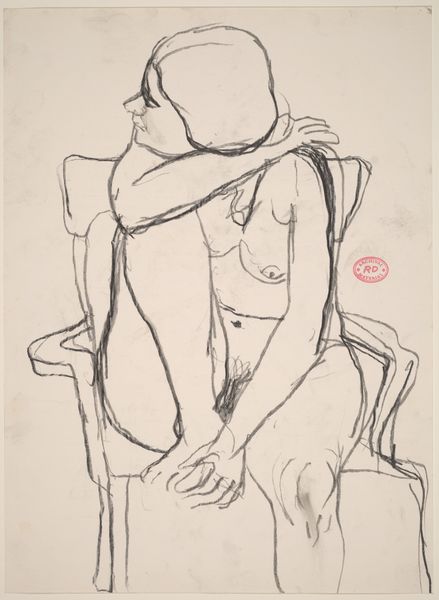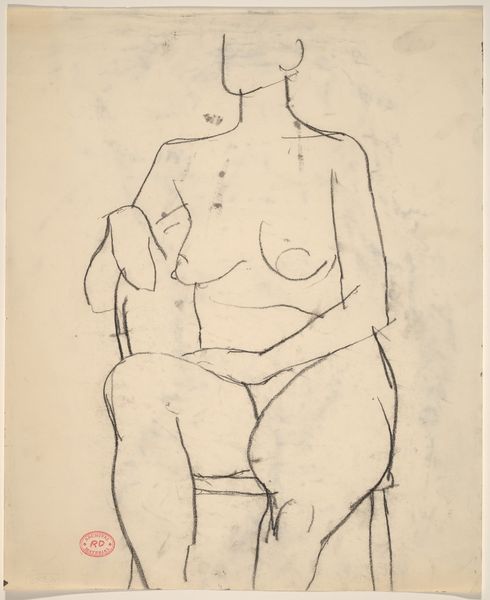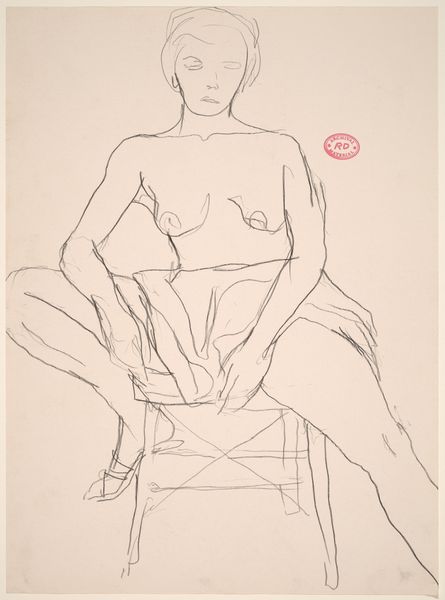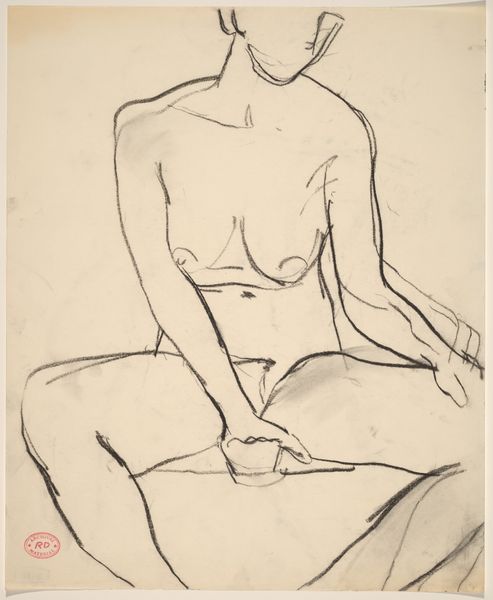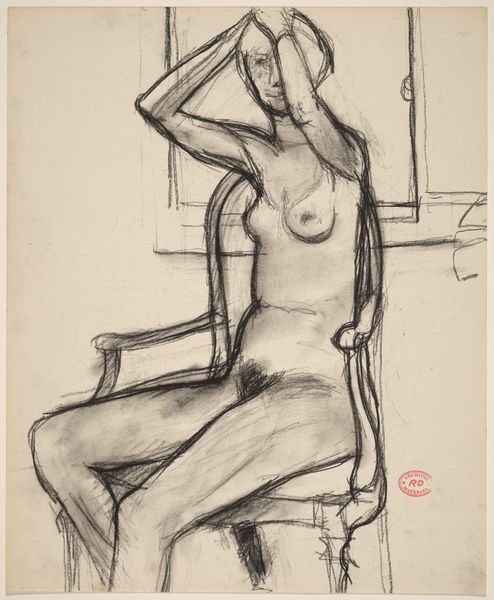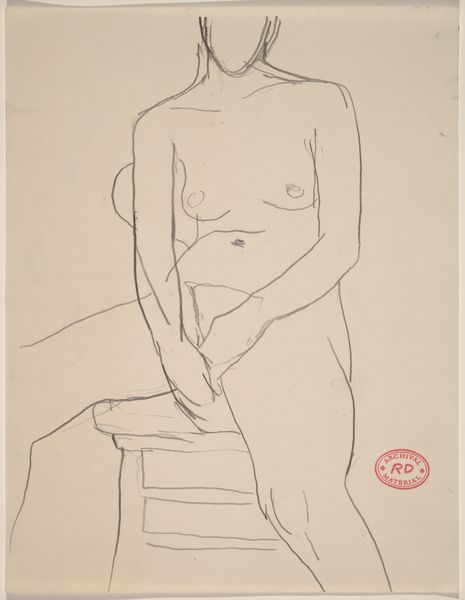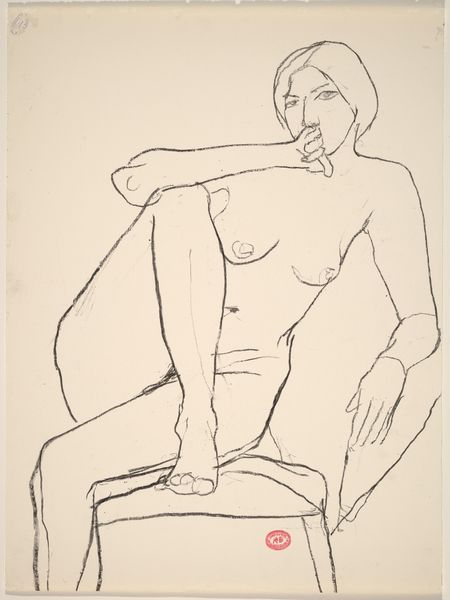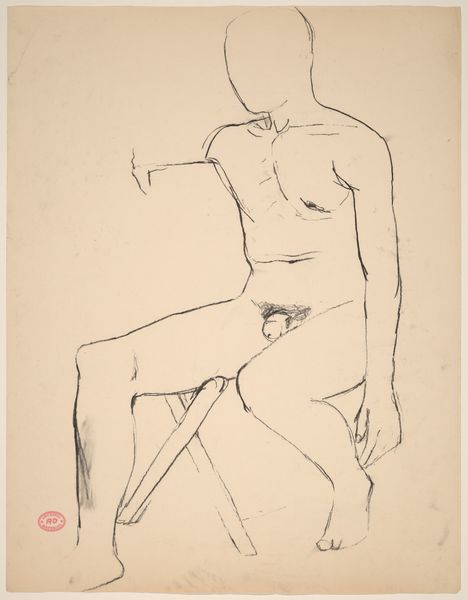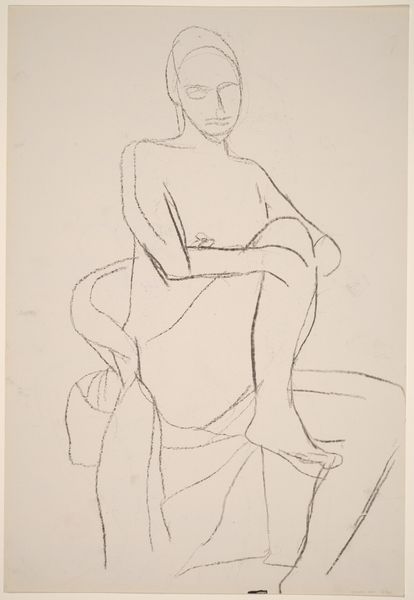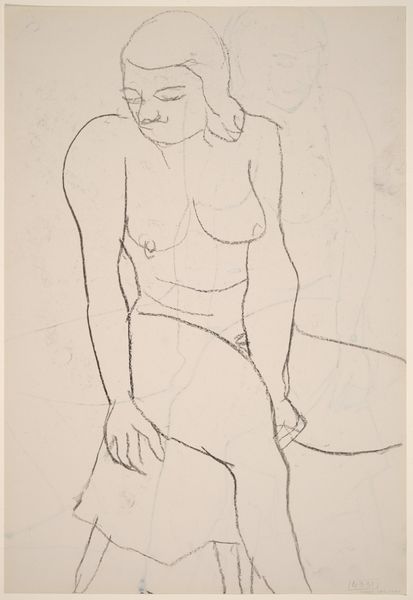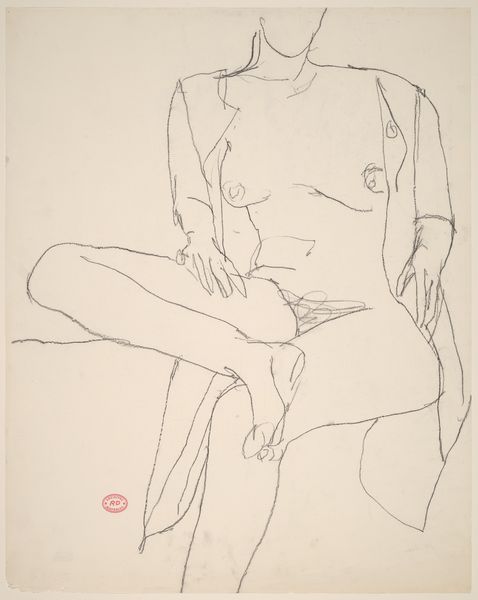![Untitled [seated nude with her shirt open crossing her leg] by Richard Diebenkorn](/_next/image?url=https%3A%2F%2Fd2w8kbdekdi1gv.cloudfront.net%2FeyJidWNrZXQiOiAiYXJ0ZXJhLWltYWdlcy1idWNrZXQiLCAia2V5IjogImFydHdvcmtzLzBiMWZkOTJjLTY0OTEtNDNlNy1iNmQ1LTQ4ZjkxYjQxZDhjMi8wYjFmZDkyYy02NDkxLTQzZTctYjZkNS00OGY5MWI0MWQ4YzJfZnVsbC5qcGciLCAiZWRpdHMiOiB7InJlc2l6ZSI6IHsid2lkdGgiOiAxOTIwLCAiaGVpZ2h0IjogMTkyMCwgImZpdCI6ICJpbnNpZGUifX19&w=3840&q=75)
Untitled [seated nude with her shirt open crossing her leg] 1955 - 1967
0:00
0:00
drawing, pencil
#
drawing
#
figuration
#
bay-area-figurative-movement
#
pencil
#
nude
#
realism
Dimensions: overall: 60.2 x 47.9 cm (23 11/16 x 18 7/8 in.)
Copyright: National Gallery of Art: CC0 1.0
Editor: This drawing by Richard Diebenkorn, made sometime between 1955 and 1967, simply titled "Untitled [seated nude with her shirt open crossing her leg]" really strikes me as raw. Just the bare pencil on paper. What stands out to you in this piece? Curator: The deliberate nature of the mark-making is what captures my attention. The lines aren't precious, they're searching. Diebenkorn is using readily available materials – paper, graphite – to explore the relationship between the artist, the model, and the act of representation itself. It seems to challenge traditional notions of the idealized nude by focusing on the labor and the materiality of its production. Editor: So, it's less about beauty, and more about process? Curator: Precisely! Think about the sitter as a laborer too, holding a pose. Diebenkorn isn't just depicting a body; he's engaging in a social exchange mediated by materials. Consider the economic implications of this exchange, the commodification of both the artist's labor and the model's body. How does the "realism" claim its position as art rather than an instructional drawing? Editor: That's fascinating. I hadn’t thought about the social dynamics within the artistic creation itself. I guess I often separate "fine art" materials from the everyday tools used to create this. Curator: Exactly, and by elevating the humble pencil and paper, Diebenkorn blurs those lines. He is confronting what constitutes artistic labor and worth. This shifts our understanding to the artistic intervention of an artistic act rather than merely observing it. Editor: I'm seeing this drawing in a whole new light now. I went in looking for classic art historical analysis and found labor and economic theory instead. Curator: Indeed, and isn’t that where art finds it truest resonance? Always revealing in both intent and historical practice.
Comments
No comments
Be the first to comment and join the conversation on the ultimate creative platform.
